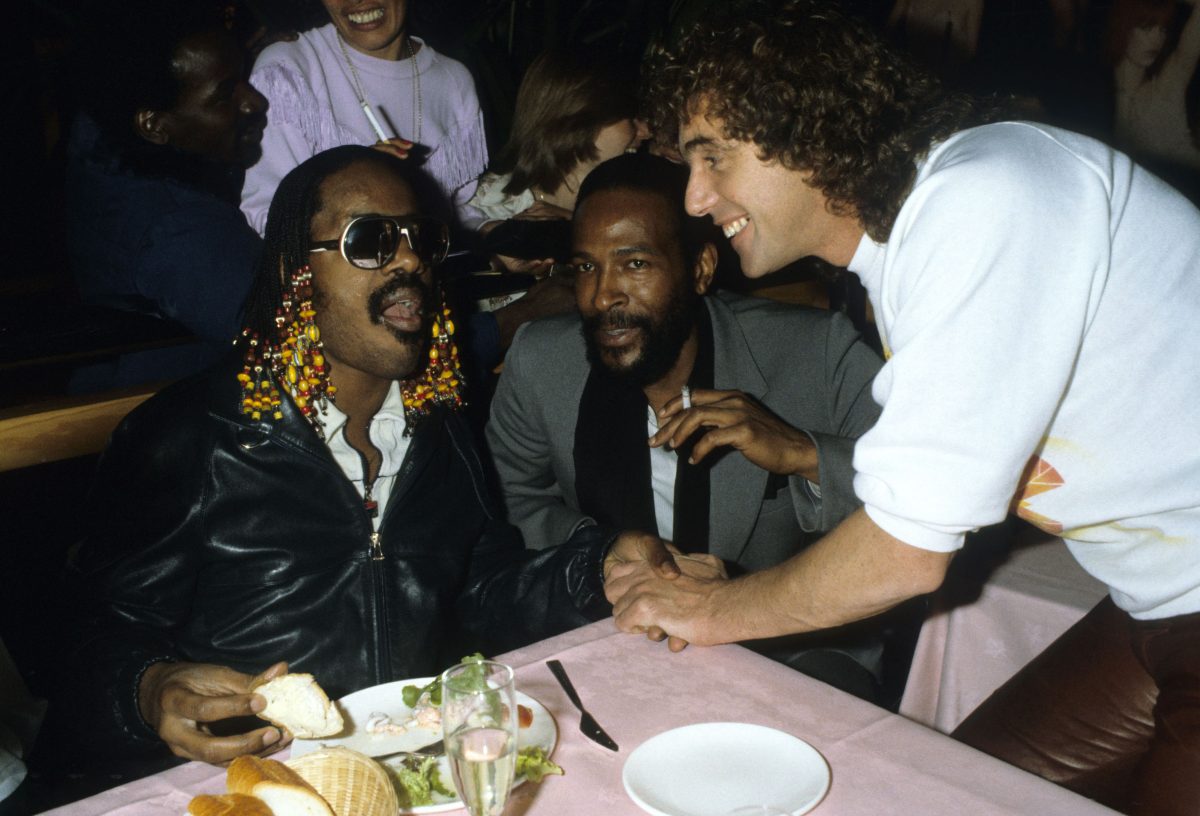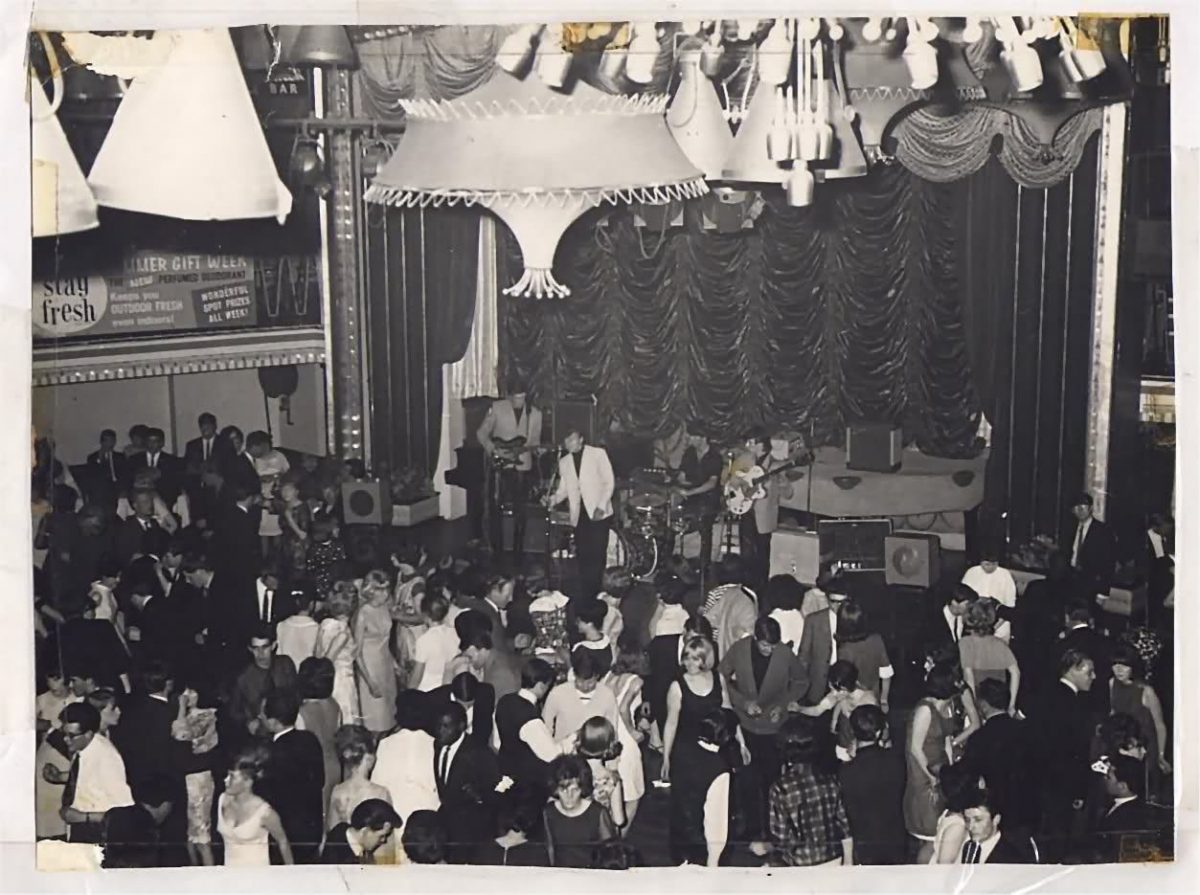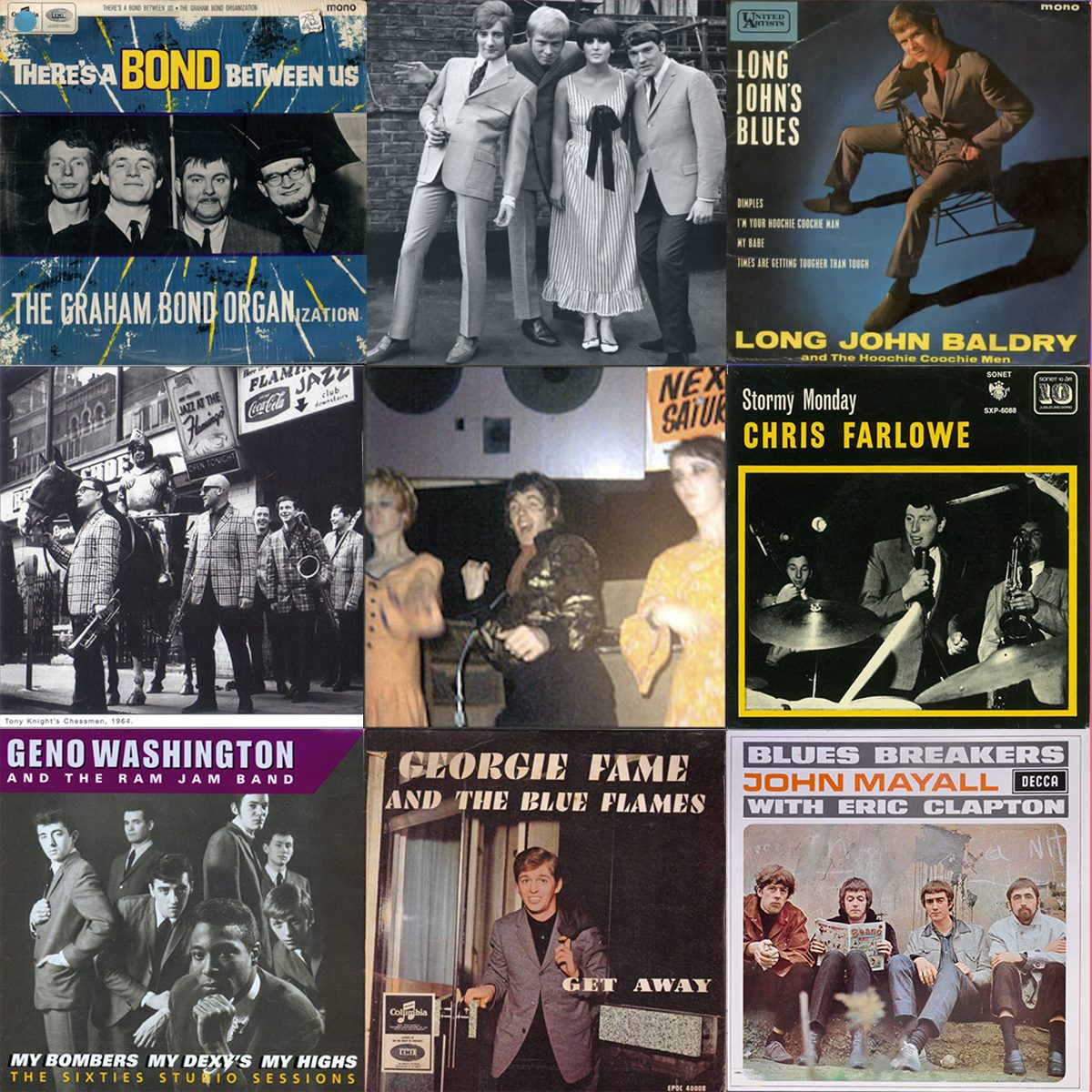
Stevie Wonder & Marvin Gaye Talk to Peter Stringfellow at Stringfellows Night Club, London, where They Performed A Late Night Set, ending at 5am – 19 Jun 1981. Stevie Wonder, as Little Stevie, was the last person to play at Stringfellow’s club in Sheffield – King Mojo – in 1967
Peter Stringfellow (17 October 1940 – 7 June 2018) wrote to me a few years ago regarding a story of mine on the Flamingo Club. The self-made, mullet-haired, club impresario and celebrated thong-twanger was commenting on a story I’d written:
“In 1963 I use to go to the Famingo all nighters but all ways fell asleep before 2am usually just as Georgie Fame and The Blue Flames came on stage. I then open a club in Sheffield ( my 3rd by then), which I called King Mojo, and started all nighters every Saturday. I booked all the groups from the Gunnells, Georgie, of course, Long John Baldry, The Hoochy Coochy Men (with Rod Stewart as their 2nd singer), Graham Bond Organisation, Tony Knight and The Chessmen, Chris Farlowe and The Thunderbirds, John Mayall’s Bluesbreakers and The Ram Jam Band, which eventually got Geno Washington as their lead singer!! As the saying goes, the rest is history !!!!!”
Below are extracts from an excellent post on Underground about Stringfellow’s legendary club King Mojo in Sheffield at 555 Pitsmoor Road:
Mojo – or the King Mojo Club – got its name from the Muddy Waters single “Got My Mojo Working”, and began to attract those who had a mojo, who loved blues and soul music. It was originally rented for thirty quid a week, under one strict condition: that lothario and now-impresario Peter Stringfellow would keep the pictures of Queen Elizabeth and her beloved husband up on the wall. With the royal deities in place, Peter soon began to feel as though the club was too austere, and logically started to paint the walls with African art. Irrelevant, but important in building up Mojo’s blasé image. Throughout the club’s epoch, it constantly flirted with new aesthetics, paralleling the break-through in Britain’s music scene at the time. Peter decided it was initially a blues bar, then an R’n’b house, then a soul club, then a flower power psychedelic nirvana, and the interior decoration continuously evolved to follow suit. Peter said that he got the inspiration for the latter from footage that he saw of the flower power movement in San Francisco: a dizzying recipe of LSD, flares and flowers. He has since guiltily admitted he may have caused the break-up of his-then-best friend and his girlfriend by introducing him to the culture; for once they had assimilated into the groovy age, his friend’s girlfriend thought he’d turned gay as he’d started to wear kaftans and consequently broke up with him. What a tough break.
The live music also took a similarly oscillating and progressive approach: The Who, Jimi Hendrix, Stevie Wonder, Ike & Tina Turned and the Small Faces were just a few bands to grace the small stage. Sometimes Peter could not afford the artists in headline slots, like Wilson Pickett, so asked him to play at 2am when the club numbers had begun to dwindle. Whilst the performing artists differed in genre, they fit in perfectly in their disparity. Mojo didn’t discriminate, they just wanted to keep the fervour of music alive, mainly through dance. If you didn’t have two left feet, and you were brave enough, you could dance on a makeshift go-go stand by the side of the stage. Anyone and anything was allowed, and with that, some great stories were born. The Kinks conceived ‘All Day and All of the Night’ there; the Small Faces played there on a whim after they got kicked out of another bar when their James Brown cover didn’t go down well with the trendy crowd; Jimi Hendrix delightfully lit up a spliff in front of a police officer after a drug-raid of the venue.
What was so magical about Mojo was that it seemed to be delightfully unconventional: the dressing room was at the front, the stage at the back. If an artist wanted to go to their wardrobe, they’d either have to wait for the crowd to willingly let them go, or they’d have to push and shove their way through an enormous sea of sweaty bodies as they boogied and bopped on the dance floor. The fourth-wall was broken: there didn’t have to be any differentiation between performer and audience, which resulted in electric energy between the crowds. Even more unconventional for a rowdy music club was that the place had no alcohol. You heard it: no shots of whisky to get you through those energetic dancing numbers, nor any booze for the budding artists to quench themselves on. All there was was a coffee bar for the gig-goers to get their kicks.
This month marks the forfieth anniversary since the club met its downfall in 1967. The last person to play was Stevie – then ‘Little Stevie’ Wonder – and the closure was mainly attributed to the location, drug allegations, and a failed alcohol license application. Of course, Peter went on to bigger things, but this venue remains musically mythical. It is unbelievable to think that a small house-cum-club in the middle of a Sheffield street could have hosted such incredible Motown, Soul and Mod bands and created such fantastical stories.
Here are some youtube clips of artists that played at King Mojo:
Would you like to support Flashbak?
Please consider making a donation to our site. We don't want to rely on ads to bring you the best of visual culture. You can also support us by signing up to our Mailing List. And you can also follow us on Facebook, Instagram and Twitter. For great art and culture delivered to your door, visit our shop.




